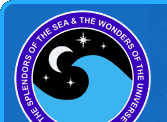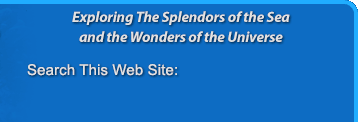900

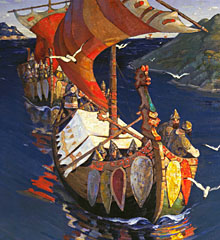
Public Domain Image
900
Viking Expeditions Begin
The ancient Vikings begin to explore and colonize Iceland, Greenland, and Newfoundland. Vikings are the Norse people from southern Scandinavia, which is present-day Denmark, Norway and Sweden. They are among the first explorers to use the North Star to determine their latitude while sailing.
1000

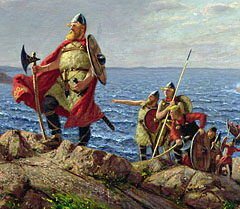
Public Domain Image
1002
Voyage of Leif Erikson
Norse explorer Leif Erikson becomes the first European to land in North America. His voyage takes place nearly 500 years before that of Christopher Columbus. He calls the new land Vinland and establishes a Norse settlement in what is now the northern tip of Newfoundland in Canada.
1400

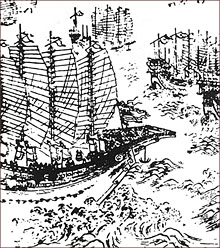
Wikipedia Public Domain Image
1405
Chinese Exploration
The Chinese send out seven voyages consisting of over 300 ships and a combined crew of nearly 37,000. These voyages are designed to extend Chinese influence and impress their neighboring states. Economic pressures back home put an end to these expensive voyages after only a short time.

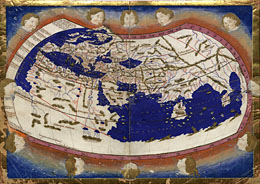
Wikipedia Public Domain Image
1410
Ptolemy's Map Rediscovered
Ptolemy's famous map of the world is rediscovered and published once again after the European crusades capture ancient Roman libraries from the Arab peoples.

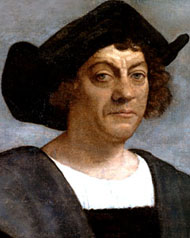
Wikipedia Public Domain Image
1492
Voyage of Christopher Columbus
The Spanish explorer Christopher Columbus sets out on his historic voyage across the Atlantic Ocean in search of a passage to China and India. Instead, he discovers North and South America which eventually leads to European colonization of these newly discovered continents. His expeditions were the were the first European contact with the Caribbean, Central America, and South America.

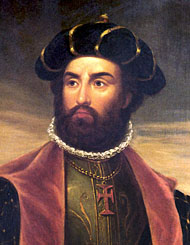
Wikipedia Public Domain Image
1498
Voyage of Vasco da Gama
The Portuguese explorer Vasco da Gama sails his ships around the Cape of Good Hope on the southern tip of Africa and becomes the first European to reach India by boat. The expedition later returns to Portugal with a valuable cargo of rare spices. This is considered to be a milestone in world history, since it marks the beginning of a sea-based phase of global multiculturalism.
1500

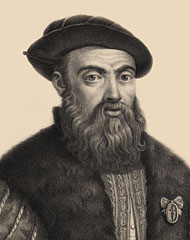
Wikipedia Public Domain Image
September 20, 1519
First Circumnavigation of
the World
Ferdinand Magellan and his fleet of ships depart Portugal to begin a daring voyage of discovery. The fleet will become the first to sail around the world. Magellan, however, does not live to see their accomplishment. He dies on the Island of Mactan in the Philippines in 1521 from the poison arrows of the local native people.

1535
First True Diving Bell
Guglielmo de Lorena invents the first true diving bell. The apparatus rests on diver’s shoulders and has much of its weight supported by slings. The bell is tested in a lake near Rome and provides enough air for the diver to breathe for about a one-hour dive. It is hoped that this device can be used to help recover treasure from sunken Roman ships.

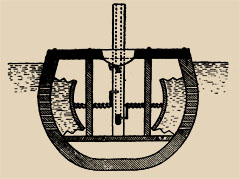
Wikipedia Public Domain Image
1578
First Plans for a Submarine
An English mathematician named William Bourne draws up the first known plans for an underwater boat. These plans call for a leather-covered wooden frame craft that would be rowed from the inside. There is no evidence to suggest that this craft was ever built.
